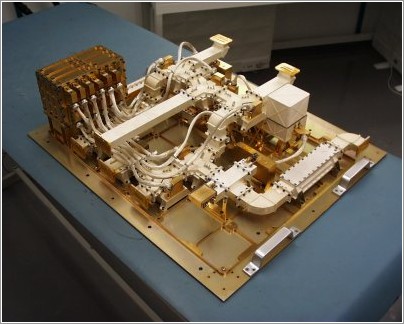
SatellitesMetOp-A, the first of three satellites developed under a joint program being carried out by the European Space Agency and the European Meteorological Satellite Organization (EUMESAT), was successfully launched from Baikonur, Kazakhstan on October 16, 2006. The satellite is now under the control of ESA's European Space Operations Centre (ESOC) in Darmstadt, Germany. MetOp-B was successfully launched in September 06, 2012. MetOp-A/B forms the space segment of the EUMETSAT Polar System (EPS), designed to collect atmospheric and environmental data to complement the hemispheric survey conducted from geostationary orbit by the Meteosat system. EPS will be operated in coordination with the US Polar Operational Environmental Satellite (POES) system managed by the National Oceanic and Atmospheric Administration. The satellite was released into a circular orbit at an altitude of 837km over the Kerguelen archipelago in the South Indian Ocean. With a slightly retrograde 98.7° inclination, this orbit enables MetOp-A to circle the globe from pole to pole while always crossing the equator at the same local time, i.e. 9:30 am. Known as 'sun-synchronous', this type of orbit allows revisits to almost each point of the Earth's surface under similar solar illumination conditions on an approximately daily basis. While NOAA satellites are deployed in an 'afternoon' orbit (i.e. crossing the equator in the afternoon, local time), Europe's MetOp provides its service in a 'morning' orbit. Satellite InstrumentsThe ASCAT scatterometer transmits linear frequency-modulated pulses with a duration of around 10 msec at a peak power of 120 W. Echo signal is received by the instrument and may be thought of as a large number of superimposed echo pulses arriving over a range of times corresponding to the width of the instrument swath. The received echo is mixed with a suitably delayed pulse, which is a frequency-modulated replica of the transmitted signal. Because of the linear frequency modulation, the pulses are offset from the local oscillator pulse for the duration of the echo by frequencies f1 and f2, respectively. These frequency differences allow the discrimination of signals originating at different ranges. For the real received echo, the mixer output is a spectrum of signals, which is present for a time corresponding to the time that the transmit pulse is present within the swath. By sampling the mixer output in time, and Fourier-transforming the time series into a frequency series, the frequency spectrum may be extracted from the data and the height and frequency of its spectral lines may be interpreted in terms of power and range, respectively.
 ASCAT Scatterometer In addition to the processing of echo signals, the instrument also performs an internal calibration process within each pulse repetition interval. This consists of a measurement of the output power during the transmit pulse, the injection into the receiver of a signal proportional to the transmit pulse at a point in the inter-pulse period, and monitoring of the magnitude of this signal at the receiver output. This gives an indication of how the combination of transmitter power and receiver gain is varying and allows changes in these parameters to be compensated. Also contained within the pulse repetition interval is a period after all echoes have decayed, during which the receiver noise output is monitored. This enables the contribution of the receiver noise to the radar measurement to be estimated and a correction performed. |
|